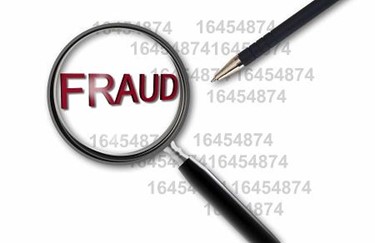How To Leverage Technology Against Healthcare Fraud
By Kayla Matthews, Productivity Bytes

Health care fraud can come in all shapes and sizes. For example, an unscrupulous physician might use patient information to bill for services they didn't render. There is also something called medical coder unbundling, where a practice bills a patient for each separate step of the procedure.
Other common types of insurance fraud include:
- Performing unnecessary procedures for higher profit
- Misrepresenting uncovered treatments as covered
- Accepting kickbacks for patient referrals
- Waiving co-pays to up-bill a patient's insurance
In 2018, the federal government used the False Claims Act to recover more than $2.8 billion, and of this sum, healthcare fraud was responsible for $2.5 billion. Fraud in the healthcare sector is seemingly prolific, but technology could prevent it.
Improve Security With Biometrics
One way hospitals are fighting against healthcare fraud is by implementing biometric security measures. When a patient arrives at a verification point, biometrics — like a fingerprint scanner, iris scanner or facial recognition — strengthen the identification process. Health care facilities can use this type of security measure to match a person to their ID on file before allowing access to private information.
At Northwell Health in New York, each visit with a patient starts with a photo, which automatically links with a patient's record and gets verified using an iris scanner upon subsequent visits. This photo also can help for facial recognition purposes. Keely Aarnes, IT director at Northwell Health, believes facial recognition could improve the patient experience. "If we can embed the technology into CCTV and identify the patient when they arrive, we can welcome them through the digital patient application and/or check them in."
Find Patterns With Predictive Modeling
Predictive modeling uses data mining and quantitative analysis to detect fraud and initiate an action plan. When a claim is submitted, the adjuster inputs the information, and the predictive model calculates a risk score, also called a suspicion score. The higher the score, the more likely the chance of fraud.
Real-time data can cut down on healthcare fraud and abuse. Predictive modeling can detect patterns in provider fraud and behavior, looking for common indicators like inappropriate billing and kickback schemes. With data-mining tools, health organizations can extract useful information from thousands of claims and identify a small subset in need of further scrutiny. This approach to fraud detection is more efficient and effective than IT-based auditing.
Detect Fraud 24/7 With Ai
A wide range of industries use artificial intelligence (AI) to save time, money and resources. In the healthcare industry, it's also a flexible way to detect and prevent fraud. The software can adapt and learn, automating the process to identify two of the industry's most pressing issues — coding and billing errors. An error could be billing both a patient's private and government insurance for the same service. Another might be charging for a higher cost than allowed by the billing code.
AI is consistent and error-free, able to work 24/7 without break or distraction. Health care facilities that use AI can detect a variety of errors across departments and create a more efficient and accurate claims process. Jim Routh, the chief security officer at Aetna, claims the company has roughly 350 machine learning models dedicated solely to security.
Use Blockchain To Track Data
Most people have heard of blockchain as a transaction ledger used in cryptocurrency transactions. But many believe it could be a revolutionary tool for reducing healthcare fraud. In the healthcare industry, most fraudulent practices begin with the manipulation or destruction of data. But with blockchain, it is impossible to delete or change data.
Blockchain also allows for detailed asset tracking — where something came from and where it went. This transparency could be useful for clinicians and other healthcare professionals attempting to trace medications from the manufacturer to the consumer. The ease and effectiveness of tracking would increase patient safety by tracing large-scale problems back to their origins.
Microchipped Cards
Another reason healthcare fraud is so rampant is the lack of safeguards to prevent over-billing, falsifying records and more. One way to cut down on those abuses is to implement microchipped smart cards. These cards have a microcomputer chip inside, with data stored inside that can verify patient identity. All information is encrypted to prevent tampering and forgery. While smart cards won't prevent all fraud, they can make a significant impact.
One 2016 report revealed smart cards could have helped prevent healthcare fraud in more than 20 percent of cases. Cards are most practical in fraud cases involving lack of verification during the time of care. It's also possible to configure smart cards to store data on opioid prescriptions, tracking information like medical histories and overdoses. If a patient's prescription request is suspicious, clinicians get a real-time warning.
As new technology rapidly develops, the healthcare industry must find ways to adapt and improve. One way to leverage technology is to detect and prevent healthcare fraud. Predictive modeling and artificial intelligence can mine data and pinpoint suspicious claims. And tech like biometrics and smart cards can improve patient and care verification.
About The Author
Kayla Matthews is a MedTech writer whose work has appeared on HIT Consultant, Medical Economics and HITECH Answers, among other industry publications. To read more from Kayla, please connect with her on LinkedIn, or visit her personal tech blog at https://productivitybytes.com
